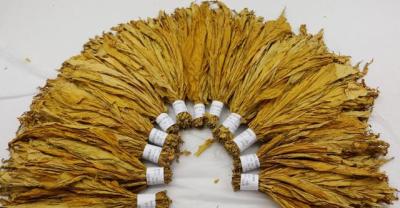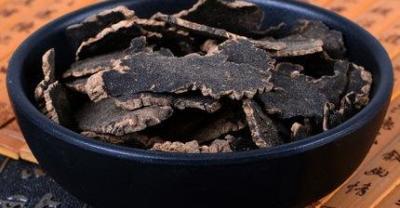How to plant tobacco with high yield technology? What kind of drugs are commonly used for tobacco diseases and insect pests and their control
Tobacco not only can be made into cigarettes, dry cigarettes, pipe cigarettes, cigars, etc., but also has a variety of medical uses. Although tobacco brings a lot of harm to human beings, even known as "poisonous weeds", many countries or regions explicitly restrict circulation or smoking, and members of the World Health Organization have also signed the Framework Convention on Tobacco Control. However, as a medicinal plant with a long history, its medical value can not be erased because of its harmfulness.
According to the National Compendium of Chinese Herbal Medicine, tobacco is warm and poisonous, and has the effects of detumescence, detoxification and insecticidal effect. it is mainly used for eczema, tinea capitis, white ringworm, bald sore, poisonous snake bite and other diseases. it can also treat gangrene, back carbuncle, wind phlegm, crane knee (including bone tuberculosis, chronic suppurative knee arthritis, etc.) and other diseases. It can also be used to kill the "four pests" (snail, mosquito, fly, mouse) and insecticidal.
The average contents of chemical components in flue-cured tobacco are as follows: total sugar 23.08%, reducing sugar 19.63%, total nitrogen 2.00%, nicotine 1.99%, protein 10.32%, wood value 2.45, total sugar / nicotine 14.21, total nitrogen / nicotine 1.15. Tobacco also contains trace amounts of the radioactive substance polonium-210.

Carbon-based fertilizer for tobacco
Cultivation techniques
Identification of soil quality: the quality of tobacco is different, "due to the nature of the earth". The ancients thought: "the leaves of tobacco grown in sandy fields are thin, while those grown in mountain fields are withered." the root growth depends entirely on the fertility of the soil, and the thick and half-plump soil is plump. "if it is planted in the land with thick, loose and good drainage, it will grow well, while the tobacco planted in the mountains and fields will grow poorly, and the taste of tobacco grown in different places is also different." Only the newly reclaimed wasteland can be planted again, but the top ear laid down in the first year must be "completely lost to the ground", otherwise there will be a plague. Therefore, planting tobacco must be changed every year, usually at an interval of 3 years, and replanted once.
Before and after the Winter Solstice, select a fertile land, dig and rake flat, spread a layer of scorched ash, about 5 minutes thick, then sprinkle tobacco seeds evenly on the ash soil, about half a month, the seeds germinate, before and after February, sprinkle again before planting, after such careful cultivation, the seedlings are fat and easy to live.

Carbon-based fertilizer for tobacco
Whole soil fertilization: plough the soil once or twice before planting to loosen the soil and remove weeds, and then make a border. In addition, the bed should be tortoise back-shaped to facilitate drainage, with 1 plant per hole and 2 feet between rows, and the carbon-based nutritional microbial fertilizer developed by Professor Liu Cunshou should be applied into the hole. The amount of carbon-based nutrient microbial fertilizer can be determined according to the fertility of the soil. Tobacco seedlings can be transplanted after the beginning of spring.
Transplanting: before and after Grain Rain, the seedling grows 3 to 5 leaves and is about four or five inches high, which can be transplanted on cloudy and rainy days. In case of sunny day, it can be diluted with carbon-based humic acid water-soluble fertilizer and irrigated continuously for 3 days until seedling work.

Carbon-based fertilizer for tobacco
Disease prevention and cure
Mosaic disease
1. Strengthen the breeding and utilization of disease-resistant varieties. According to the actual production of tobacco leaves, some disease-tolerant varieties with strong growth potential, fast development and adapting to the local environmental conditions should be selected to reduce the severity of the disease.
two。 The hygienic cultivation measures should be strengthened to give full play to the role of nutritional resistance. First of all, the choice of seedling bed should be far away from places with many sources of virus, such as vegetable field, roasting room, tobacco drying shed and warehouse, and seedling bed soil fumigation and nutrition bowl should be carried out to raise seedlings. Secondly, when operating in seedbeds and fields, hands and tools should be disinfected with soapy water. In the management of seedlings and fields, healthy plants should be treated first, diseased plants should be treated later, and smoking or eating eggplant vegetables such as tomatoes should not be eaten during the operation. at the same time, do not walk and touch too much in the tobacco field. Thirdly, cultivation management should be strengthened to improve nutritional resistance. Adequate application of carbon-based nutrient microbial fertilizer as base fertilizer and timely spraying of carbon-based humic acid water-soluble fertilizer can greatly improve the level of disease resistance of plants. Finally, we should adhere to crop rotation and appropriate centralized planting, not interplanting, rotation and stubble with Solanaceae crops.
3. Avoid aphids and prevent diseases. Aphids play a decisive role in the transmission of CMV, which is an important way of transmission of CMV virus. The algebra of aphids in a year varies from place to place, and the aphids generally breed 15-17 generations in the way of parthenogenesis in tobacco. Because the aphids' life style is divided into complete cycles and incomplete cycles, the overwintering hosts of aphids are also different. the former overwintered mainly in peach trees, while the latter overwintered in the form of wingless female aphids on vegetables or weeds in autumn. Therefore, in the prevention and control of aphids, the peach orchards, vegetables and weeds should be sprayed centrally from March to April every year to kill the tobacco aphids that have been or are hatching and reviving, so as to achieve the purpose of prevention.
4. Application and promotion of antiviral agents. On the basis of other disease prevention measures, the timely application of antiviral agents is also a good method. According to their own reality, all localities can timely spray some antiviral drugs, which will play a better role.

Carbon-based fertilizer for tobacco
Angular spot disease
1. Carry out crop rotation to reduce the source of bacteria.
two。 Plant disease-resistant or disease-tolerant high-quality varieties.
3. Disinfect the seeds. 4. Disinfect the bed soil.
5. Strengthen the seedling bed management, cultivate strong seedlings bed humidity should not be too large, should be properly ventilated, found that the disease seedlings immediately cleared after spraying protection. Agricultural streptomycin 150 ~ 200 μ g / ml or new plant spray was sprayed twice at an interval of 1 week.
6. Rational fertilization and strengthen field management.
7. Spray protection. Pay close attention to the occurrence of angular spot in the first ten days of June. It can be sprayed with fungicide 1 / 1 / 200 Bordeaux solution or 50%DTM wettable powder 500x solution for prevention. Once the central diseased plant is found after the rain, the whole field should be sprayed immediately. It can be sprayed with agricultural streptomycin 150 ~ 200 μ g / ml or new plant for 2 times with an interval of 7 days. More rainy days can increase the frequency of spraying. The seriously affected land should be removed from the diseased leaves before spraying. Diseased leaves should be taken out of the field and buried deep, and should not be left in the field.

Carbon-based fertilizer for tobacco
Climatic spot disease
Selection of disease-resistant varieties: this is the most economical and effective control measure proved by production practice at home and abroad.
Cultivating strong seedlings and standardized cultivation: Guangdong experience is to cultivate strong seedlings, reasonable proportion of NPK, spraying 200ppm paclobutrazol at cross stage and postponing the sowing date of varieties sensitive to low temperature. On the other hand, the field is as far away from the factory and mine brick kiln as possible, carrying out standardized cultivation, high border drainage, controlling N to increase competition, preventing and controlling virus diseases, and adaptive domestication and cultivation should be emphasized in the introduction of high quality and susceptible varieties.
Spraying protective agents: there are many protective agents tried abroad, including antioxidants, anti-transpiration agents, stomatal regulators, growth regulators, commonly used pesticides and chemical reagents, such as benzidine, benzoate, phenylmercuric acetate, etc., but they are still far from application.
Protect the atmosphere. With the rapid development of population and economy, air pollution is becoming more and more serious, so protecting the atmosphere and curbing pollution is the fundamental premise of prevention and control.

Carbon-based fertilizer for tobacco
Tobacco green worm
Agricultural control deep ploughing irrigation to kill insects in winter and spring.
Trap and kill adults: destroy adults before laying eggs.
Physical control: adults have a strong phototaxis, can also be set up black light trap.
Chemical control: ① spray: 50% phoxim EC 1000 times, 40% chrysanthemum EC 3000 times. 2.5% Kungfu EC 5000 times liquid spray. ② drop heart: control the second generation cotton bollworm, can use 50% monocrotophos 100% 200 times heart drop, 5: 8 drops per cotton plant. ③ Bt emulsion was sprayed at egg stage.
This article is organized by Qin Shuqiao Agriculture. Welcome to share. Readers who want to know more can enter L581220L and note "planting" to learn more.
- Prev

Asparagus planted in the water, forgive me for the first time I've heard of it.
Because it is shaped like bamboo leaves, also known as "bamboo leaves", it is generally common to grow in the ground. But recently I saw a video growing in the water on TV.
- Next

Planting techniques and pot planting methods of camellia seedlings
Camellia is evergreen in four seasons, widely distributed and graceful, so it is one of the important plant landscaping materials in the south of China. The use of camellia different natural tree shape, planted alone in the green.
Related
- Fuxing push coffee new agricultural production and marketing class: lack of small-scale processing plants
- Jujube rice field leisure farm deep ploughing Yilan for five years to create a space for organic food and play
- Nongyu Farm-A trial of organic papaya for brave women with advanced technology
- Four points for attention in the prevention and control of diseases and insect pests of edible fungi
- How to add nutrient solution to Edible Fungi
- Is there any good way to control edible fungus mites?
- Open Inoculation Technology of Edible Fungi
- Is there any clever way to use fertilizer for edible fungus in winter?
- What agents are used to kill the pathogens of edible fungi in the mushroom shed?
- Rapid drying of Edible Fungi

